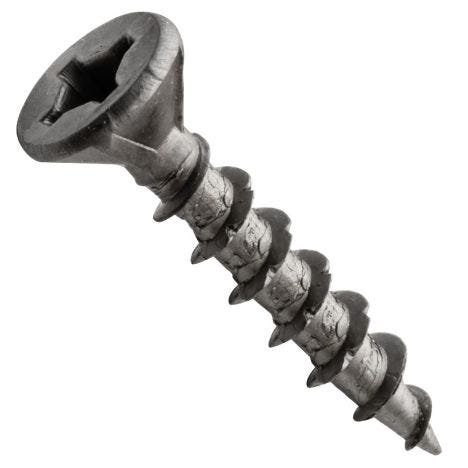Countersink bits are used to create a conical hole in wood for the head of a screw to sit flush with or below the surface. This is important for many reasons, including aesthetics and preventing the head of the screw from catching on things. The size of the countersink bit you need will be determined by the diameter of the shank on the screw you’re using.
For #8 wood screws, you’ll need a countersink bit with a 3/8″ diameter.
If you’re looking for a countersink bit for #8 wood screws, we’ve got just the thing. This bit is specifically designed to create a perfect countersink for #8 screws, making your projects look clean and professional. Simply drill a pilot hole with the included drill bit, then use the countersink bit to create a smooth, flush surface.
It’s quick and easy!
How to Countersink Wood Screws
What Size Countersink Bit for 8 Screw
When it comes to choosing the right size countersink bit for 8 screws, there are a few things you need to take into consideration. The most important factor is the diameter of the screw shank. The next thing to consider is the pilot hole size.
And lastly, you need to make sure that the countersink bit you choose is compatible with your drill chuck.
The first thing you need to do is measure the diameter of the screw shank. This can be done with a simple ruler or caliper.
Once you have this measurement, you can consult a chart that will tell you what size countersink bit you need for that particular screw shank diameter.
The next thing to consider is the pilot hole size. This is important because the counter sink bit needs to be slightly larger than the pilot hole in order to work properly.
If the countersink bit is too small, it will not cut through all of the material and will not create a proper seat for the head of the screw. Conversely, if the countersink bit is too large, it will cause damage to boththe workpiece andthe drill chuck.
Once you have determined boththe shank diameter and pilot hole size,you can then consult a compatibility chartto make sure thatthe counter sink bityou chooseis compatiblewith yourdrill chuck.
With allof these factorsin mind, choosingthe right size counter sinkbitfor 8 screws should bea relatively easy task!

Credit: www.rockler.com
What Size Countersink Bit Do I Need for #8 Screw?
If you’re looking to countersink a #8 screw, you’ll need a bit with a diameter of 3/8″.
What Size is a #8 Countersink?
The size of a #8 countersink is 3/4 inch. This is the most common size used for general purpose countersinking.
What Size Drill Bit Do I Use for a #8 Screw?
A number 8 screw is 0.164 inches in diameter, so you would use a #8 drill bit which is slightly larger at 0.169 inches.
What Size Countersink Bit Should I Use?
When it comes to countersink bits, size does matter. The correct bit size will depend on the screw diameter and the depth of the counterbore required.
For example, if you’re using a #8 screw with a 1/2″ deep counterbore, then you’ll need to use a 7/64″ or larger countersink bit.
If you’re using a #10 screw with the same depth counterbore, then you’ll need to use a 9/64″ or larger countersink bit.
As a general rule of thumb, it’s always best to err on the side of using a slightly larger bit than what is technically required. This will ensure that your screws are properly seated and won’t strip out the threads in your wood.
Conclusion
If you’re looking for a countersink bit for #8 wood screws, this is the post for you. This blog walks through the different types of bits available and provides guidance on which one to choose based on your needs. Countersink bits are designed to create a conical hole in the material, which allows the head of the screw to be flush with or below the surface.
The size of the bit corresponds to the diameter of the screw (in this case, #8). There are two main types of countersink bits: those with a pilot point and those without. Pilot points help guide the bit and keep it from walking as you drill, while non-pilot points are more versatile but require more care when drilling.
Ultimately, the best type of bit for you will depend on your project and what you’re comfortable with.
